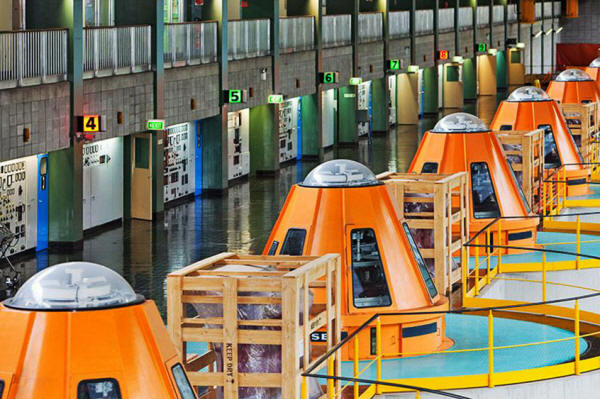|

by Quirin Schiermeier
18 October
2018
from
Nature Website

Hydropower turbines:
the
world needs immediate change to its energy systems
to
ensure sustainable growth, say economists.
Credit:
Construction Photography/Photoshot
Four decades ago, the
Club of Rome predicted looming
economic collapse in its iconic report The Limits to Growth.
An update of the analysis sees much the same picture.
On the eve of one of the twentieth century's most notable economic
shocks - the 1973 oil crisis - an influential group of researchers
released a now-iconic report entitled
The Limits to Growth.
The work, which received wide attention and proved controversial,
painted a bleak picture of humanity's future. Left unchecked, it
said, economic and population growth would deplete the planet's
resources and cause economic collapse around 2070.
More than four decades later, the report's main conclusions are
still valid, according to a group of independent researchers who
have updated the work using more-sophisticated analytical tools.
Like the 1972 report, the
latest work was commissioned by the Club of Rome, a group of liberal
scientists, economists and industrialists that was founded in 1968.
The update (Transformation
is Feasible - How to Achieve the Sustainable Development Goals
within Planetary Boundaries), released on 17 October in
Rome for the club's 50th anniversary, makes for a
sobering read.
Although its conclusions
are not quite as drastic as those of the original report, it says
that humanity finds itself in something of a catch-22.
Business-as-usual or accelerated economic growth will mean that the
world
will not be able to meet the United Nations'
sustainable development goals
(SDGs) - a suite of social, environmental and prosperity targets for
2030 - the authors conclude.
And even if governments
were to substantially strengthen what the authors call
"conventional" policies to meet social goals such as the eradication
of poverty and hunger, and achieving quality education for all, they
would be in danger of missing environmental goals.
"There is high risk
for pushing the Earth's life supporting systems beyond
irreversible trigger-points by 2050," the report says.
"It is quite disturbing to see that we're still facing the same
dilemma the Club of Rome described almost 50 years ago," says
Julia Steinberger, an ecological economist at the University of
Leeds, UK.
Conventional
policies won't do
The original report was a quantitative analysis based on a computer
model that calculated likely future outcomes for the world's
economy. Criticism focused mainly on the authors' assumptions about
how long natural resources would last.
Some economists called the book's pessimistic conclusions
"irresponsible nonsense", while others criticized the validity of
the model -
World3, a dynamic economic model
developed by US economist Dennis Meadow, co-author of the
report - that the authors had used to predict energy consumption,
pollution and population growth.
The latest version of the report was compiled by researchers with
the Stockholm Resilience Centre and the BI Norwegian Business School
in Oslo.
They used an Earth-system
model that combines socio-economic and biophysical variables,
alongside a wealth of historical and new socio-economic data, to
draw up their conclusions.
This model's elements interact with the passage of time, and it is
much more robust than World3, says Steinberger.
The researchers found that the world is currently on track to meet
only 10 of the 17 SDGs by 2030. Efforts to satisfy social SDGs with
conventional policy tools will come at the price of unsustainable or
wasteful use of natural resources such as water, land and energy.
Hence, environmental
goals, including stabilizing climate, reducing pollution and
maintaining biodiversity, could fall by the wayside, they say.
To prevent human civilization from more environmental damage than it
might be able to endure, the authors call on world leaders to
consider policies that they deem unconventional.
Only more extreme economic and behavioral changes will allow the
world to achieve all 17 SDGs together, the authors say.
These policies might include rapid phase-out of fossil fuels ,
greater use of family planning to stabilize populations, and
actively encouraging the reduction of wealth inequality so that the
richest 10% of people take no more than 40% or so of income.
The report is a vindication of the Club of Rome's initial world view
and a welcome alternative to mainstream economics' focus on growth
and equilibrium, says Steinberger.
"Most of The Limits
to Growth's original conclusions still hold true," said Johan
Rockstr÷m, a sustainability researcher at the Stockholm
Resilience Centre and a co-author of the report, at its release.
"This is
scientifically satisfactory, but for societies it's not."
|


